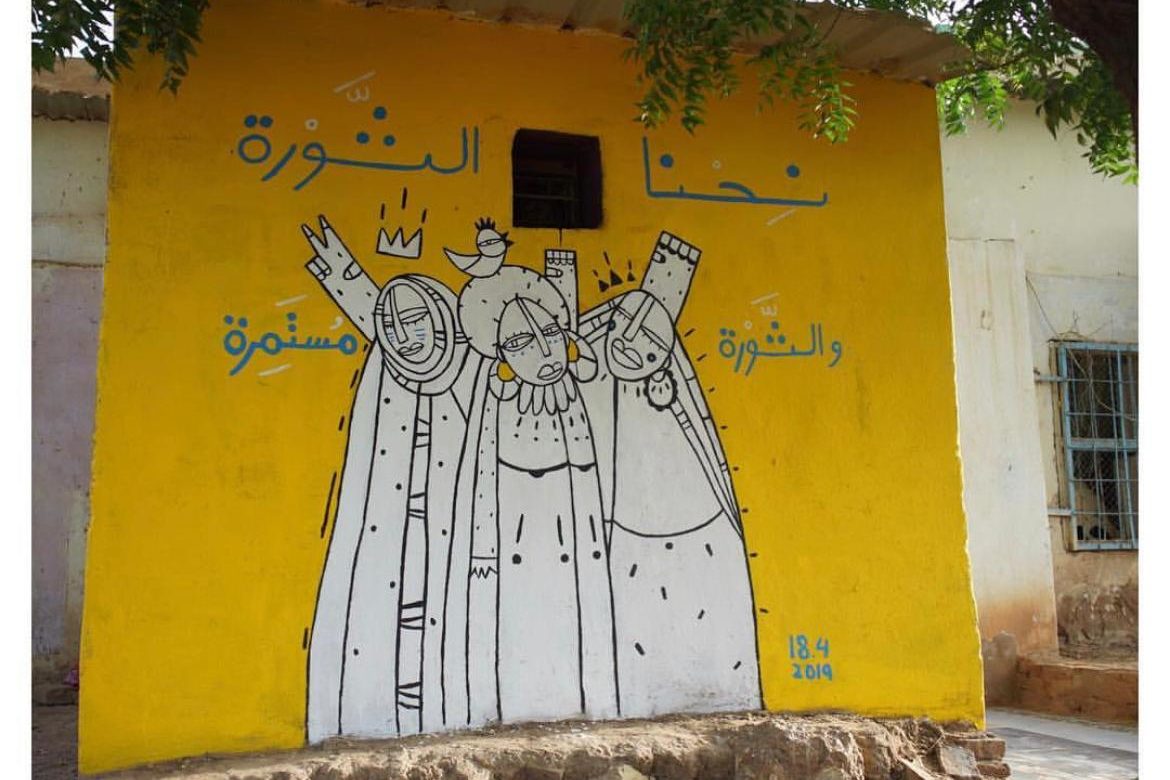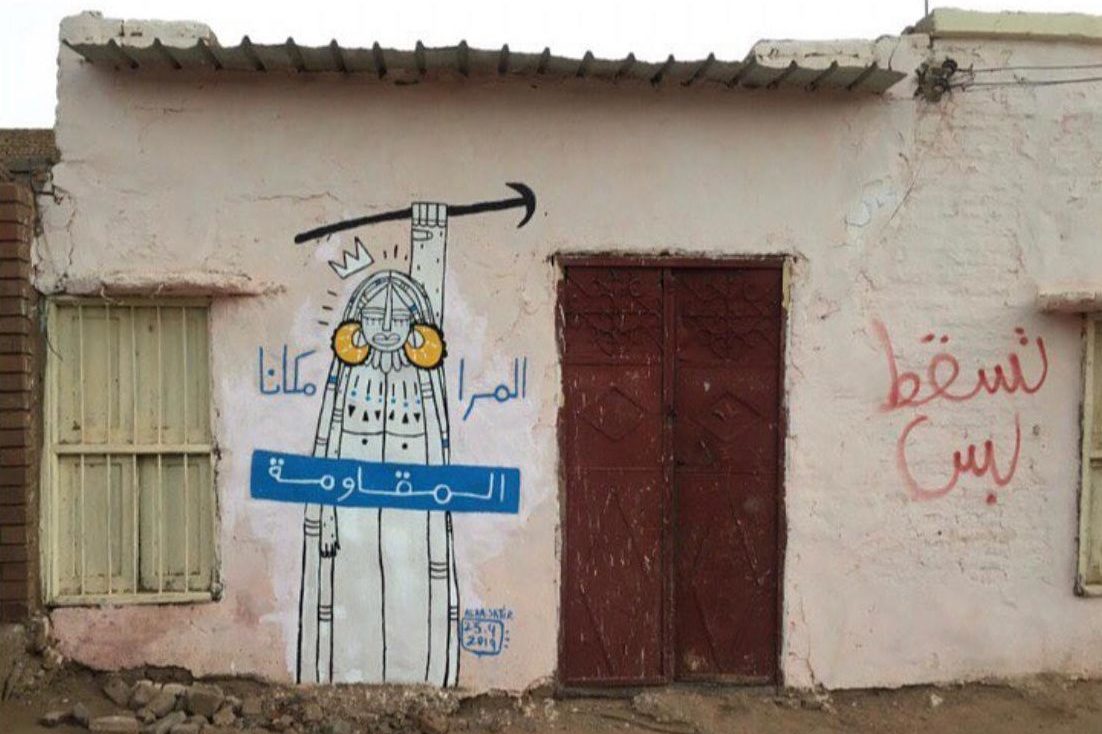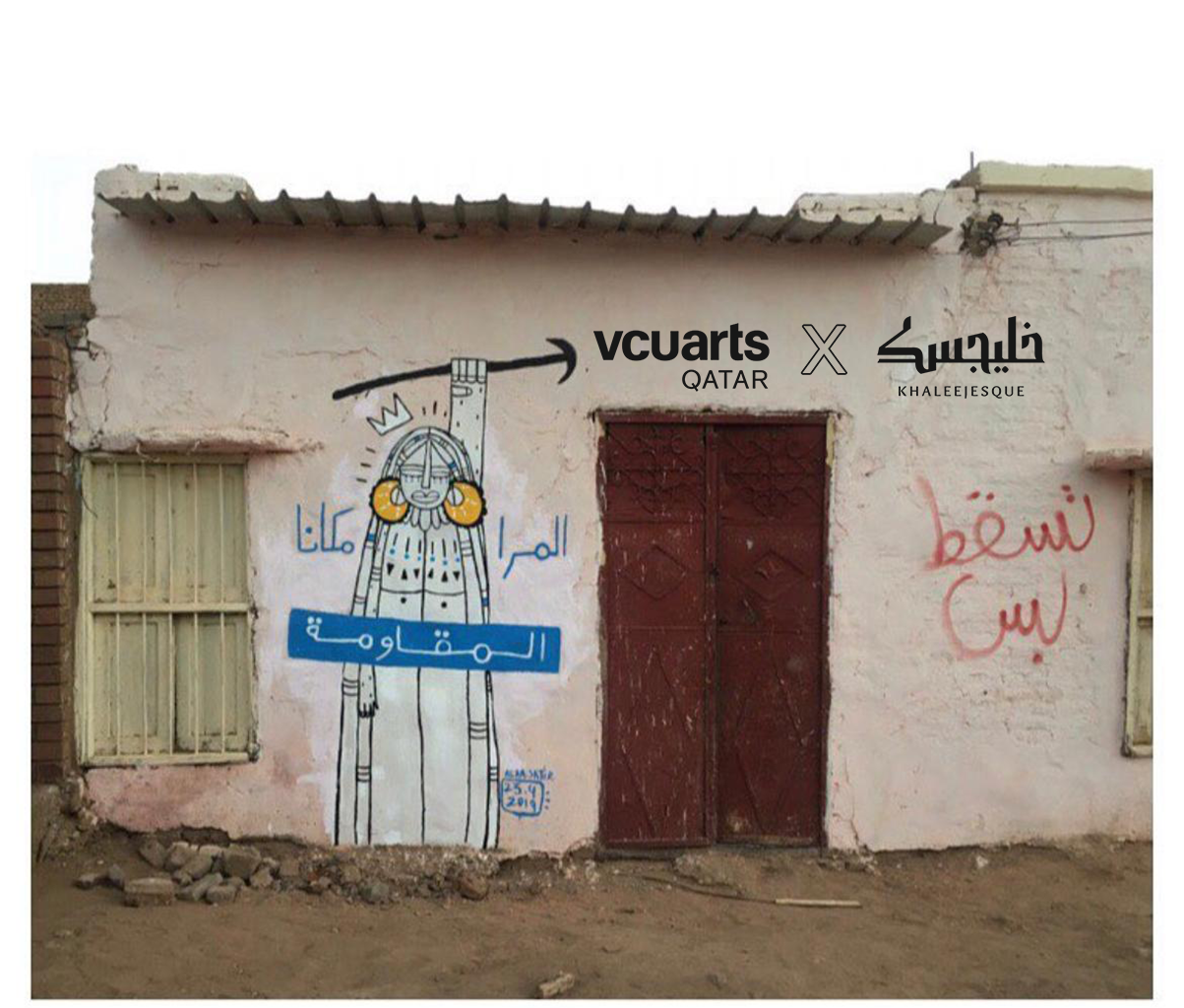This VCUArts Qatar Art History undergrad was deeply inspired by the women of Sudan during the Revolution in 2018.
Shuaa Abdelfattah has recently completed her BA in Art History from Virginia Commonwealth University School of the Arts in Qatar (VCUarts Qatar). The field of art history intrigued her as it encourages individuals to slow down their thinking and to look closely. It fosters a habit of asking important questions about the image and its overall impact.
The VCUarts Department of Art History—a community of faculty, students, artists, curators and museum professionals—takes a range of approaches to answering such questions. They embrace the fact that art history is one of the most interdisciplinary of disciplines, drawing from studies of history, religion, culture, gender, sexuality, race, ethnicity, and literature.
Shuaa thrived in the opportunity and space afforded to her, as the professors allowed students to select their own topics for projects. This flexibility made the work exciting for her and one of her final essays was titled “How Public Art in Sudan Affected the Role of Women in the December 2018 Revolution.”
The revolution took place in Sudan, in the latter part of December 2018 when the government of President Omar al-Bashir faced unrelenting protests. The rallies and marches paved the way to the Khartoum sit-in, including the nationwide civil rebellion and incursions/strikes. After several months of protesting, the military proclaimed on the 11th of April 2019 that al-Bashir was finally overthrown. It was the steadfast commitment of the Sudanese female activists that earned the 2018 Sudanese Revolution the label ‘The Women’s Revolution’
“Women fulfilled a vital part in these demonstrations. Sudanese female protesters demanded gender equality and decried the numerous bigoted and unjust laws against women through representing women in public art. It is argued here that the traditional role of women, one characterized by oppression and ill-treatment, acted as a key catalyst to the Sudanese revolution and the eventual representation of women in public art as activists and leaders of the movement.”
Shuaa is deeply connected to her Sudanese heritage and has strong ties with her home country, which is why this revolution impacted her directly, especially as a woman. She was extremely inspired to see a large number of Sudanese women at the forefront of most of the marches and made a pact with herself that since this was a time for change, she was going to do her best to support the cause as an expatriate away from home.
“This topic is very important to me as I am originally Sudanese. But also being a young woman who wants to create social change, I believed I’d have to start somewhere and I took this as a starting point for me. This essay was part of my Senior Seminar course which was on the role of women and motherhood within societies.”
“For me to succeed in this research paper was more important than anything else. Professor Holiday Powers who was teaching the course pushed me to a great extent, for which I am grateful. It was also my duty to reach out to different artists and authors to get to the core of the subject. I had other great sources like the VCUarts Qatar library and the writing centre to help me in achieving the perfect outcome for my paper.”
She chose several public artworks and artists to discuss in her paper. One of these artists include Alaa Satir, a Sudanese/British artist living in London. The 22-year-old activist believes that the women that boldly stood up were imprisoned in the name of religion. Yet, despite the ferocious response of the military, numerous women declined to be subdued and suppressed.


Alaa Satir created public murals after the defeat and overthrow of Al-Bashir. The mural titled "We are the revolution, and the revolution continues", emphasised the apparent and valuable role of women in the movement. The three traditionally dressed women are shown celebrating, with their raised hands and festive gestures. But their facial expressions are uninviting, and the slogan written around them reads “we are the revolution, and the revolution continues”. This mural depicts how even after leading and mobilising protests, the Sudanese women have been largely excluded in the following transitional phase, indicating the need for continuous resistance.
Abdelfattah travelled to Sudan and spoke to women who were part of the revolution and asked them pertinent questions like: What kinds of things did they experience during the marches? What was the experience like as a woman?
The analysis of women’s representation in public art during the revolution clarified how the role of women in society, or what is expected of them, is used by the state as means of oppression and, at the same time, by revolutionary efforts as a tool of emancipation; hence, uncovering the complex impact of women’s role on Sudanese society.”
“A closer examination of the struggles confronted by female activists during the Sudanese revolution reveals the strength of a patriarchal structure regardless of the key roles of women, the resistance and struggles persist in each and every space available. Ultimately, what the analysis shows is that public art can be used by female activists to effectively demand reforms and endorse changes at the national arena; and, that the essence of resistance reigns despite constant persecution and suppression.”
Although the challenges are ongoing, Sudanese women continue to fight.
“My final conclusions on the paper was that public art massively changed the role of women during the revolution and in Sudan in a positive way. The position of women in Sudan is also changing which is giving us hope for more change.”
Shuaa Abdelfattah is now planning to start an internship; she will continue to work around this topic in future research.
Words by Saira Malik
This series is part of an editorial partnership brought to you by VCUarts Qatar and Khaleejesque







